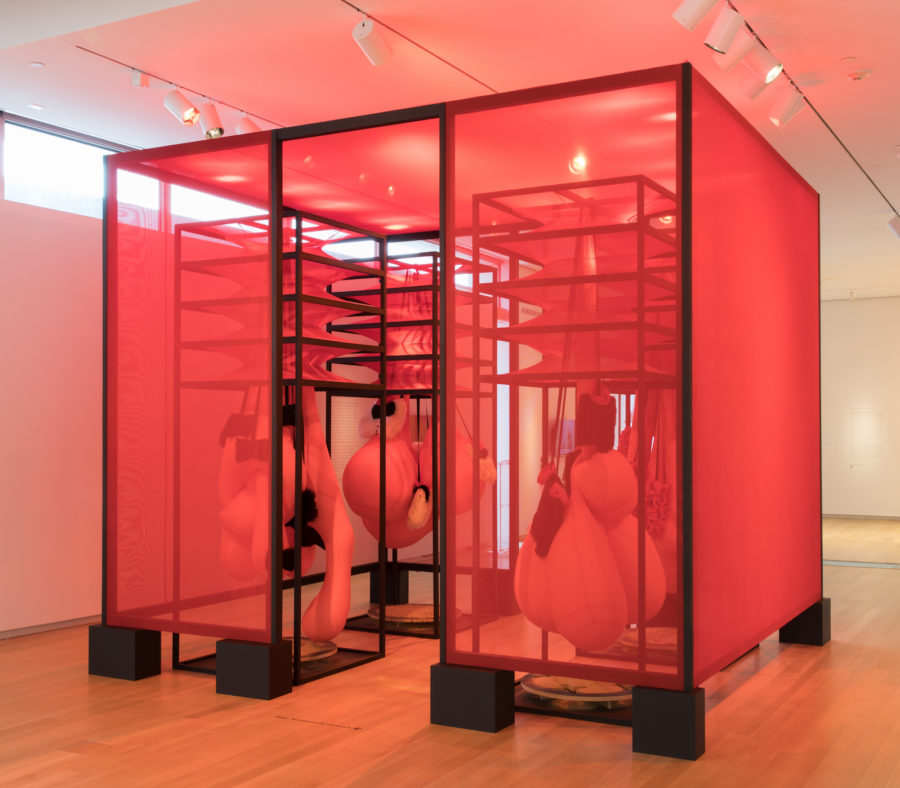The fashion system is crumbling, according to some theorists. Its framework of idealized bodies, gendered dressing, rapid consumption, and tremendous waste is not sustainable. And so, a “post-fashion” landscape is imminent.
This notion is explored in the Museum of Arts and Design’s exhibition titled “fashion after Fashion” (through Aug. 6). Co-curators Hazel Clark and Ilari Laamanen commissioned installations from six emerging talents using fashion (in the lower case, suggesting a thoughtful practice that transcends ephemera) to comment on Fashion, (in the upper case, reflecting systematic norms within the industry).
The duo behind the label Eckhaus Latta and filmmaker Alexa Karolinski tackle this in their video Coco, which presents a collection in a bathroom instead of on a runway. A diverse group of individuals share personal anecdotes in the film while wearing the line’s clothes, framing the discipline as an intimate experience that transcends age, gender, and race. Lucy Jones, whose work focuses on outfitting the disabled, taps into this theme of inclusion with 22 white cotton and silk sleeves, constructed to fit people in wheelchairs.







